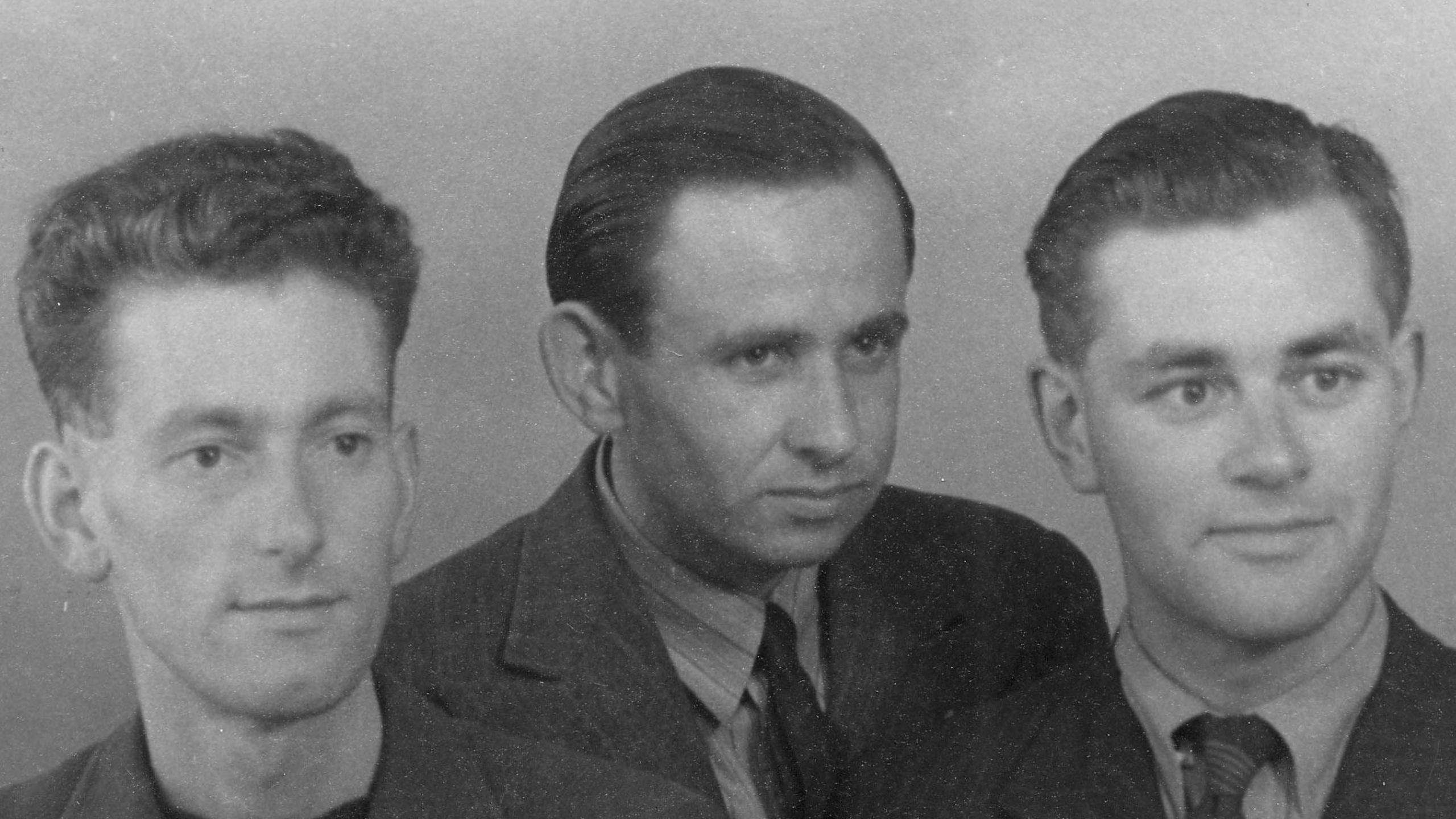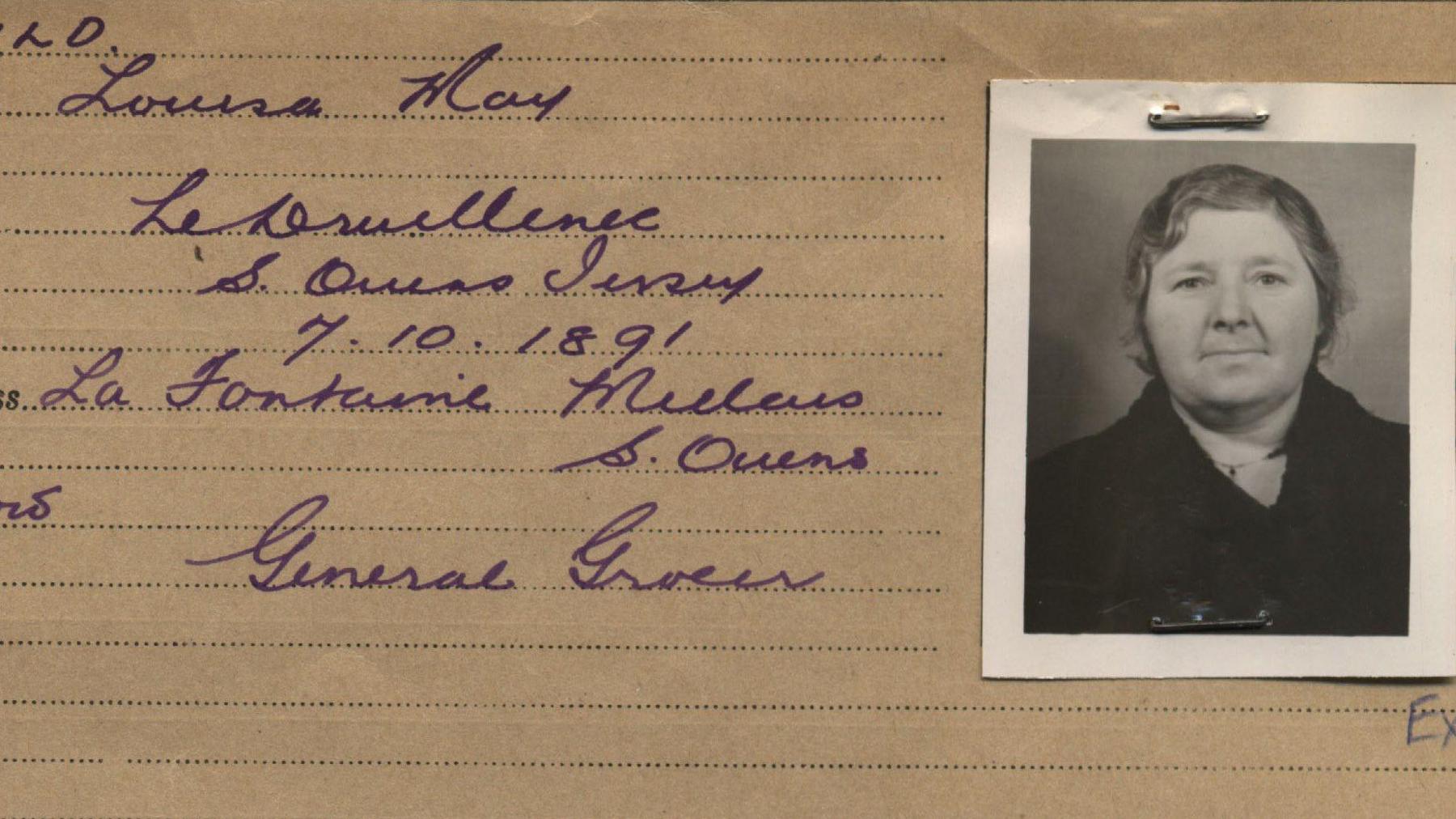Slave's WW2 Occupation artwork goes on display

A still life by 'Russian Bill' is on display in Jersey
- Published
A piece of art drawn by an escaped Russian slave known as 'Russian Bill' has gone on display in Jersey.
Feodor Polykarpivitch Burriy used pencils to draw the still-life bowl of fruit while he was being sheltered by islander Dorothy Huelin.
He had previously been staying at the house of Louisa Gould, who was arrested and killed by the Germans.
Mr Burriy gave the picture to Mrs Huelin in gratitude for looking after him and her family has donated it to Jersey Heritage.

Feodor Polykarpovitch Burriy, 'Russian Bill', centre, with René Franoux and Bob Le Sueur
An artist in danger
The artwork is now on display at the Occupation Tapestry Museum.
Jersey Heritage's senior registrar Helena Kergozou said Mrs Huelin "risked everything by allowing Bill into her home".
She said: "She took him in and he stayed there for a few weeks… She kept him occupied, she supplied him with art materials so that he could pass the time and stay busy… She would play games with him and really let him be part of her family for a time.”
Mr Burriy was an air force officer who had been captured by the Germans as they advanced across Russia in 1942.
Ms Kergozou said he and hundreds of his comrades were herded into freight trains and taken across occupied Europe to St Malo and then on a boat to Jersey.
They were put to work as slaves, building walls, bunkers and defences across the island. Mr Burriy was sent to the quarry and stone crushing plant at the bottom of Mont Pinel in St Ouen, but he escaped. Quickly recaptured, he was beaten and made to stand in a tank of freezing water overnight.
But that made him even more determined and he escaped again, this time for good. Helped by farmer René Le Mottée, he stayed hidden until he was taken in by widow Louisa Gould, who ran a shop at Millais.

Louisa Gould, pictured on her Occupation ID card
Mrs Gould treated Mr Burriy like a son, and brought him materials to pursue his passion for art.
He had studied photography at the University of Minsk before his military service and was particularly adept at pencil and pen and ink drawings.
But Ms Kergozou said they were always in danger of discovery, and were eventually betrayed. Mr Burriy was spirited away just before the Germans arrived but Mrs Gould was taken and sent to a concentration camp where she died.
Mr Burriy was moved around various safe houses by Bob Le Sueur and for two months lived at a house on Trinity Hill owned by Dorothy Huelin.
She brought him more paper, pencils and ink. The fruit still life is likely to have been copied from another picture, as the fruit he depicts would have been very rare during the Occupation.

Dorothy Huelin risked her life by sheltering Mr Burriy in her home
Ms Kergozou said after a couple of months Mr Burriy moved again finally settling at a flat in Grosvenor Terrace until the end of the war.
He was sheltered by two conscientious objectors, Michael Frowd and René Franoux.
He continued drawing and his hosts managed to sell many of his portraits to islanders who gave him photos of their loved ones to copy. They were told he was a crippled soldier who couldn't leave his room.
'Significant personal artefact'
After the war Mr Burriy was made to return to Russia where he lived under suspicion because he had been captured by the enemy. Finally he was able to return to Jersey to unveil a plaque to the memory of Mrs Gould and the others who had helped him.
Now, Mrs Huelin's family has given the picture he drew for her to Jersey Heritage to display.
Ms Kergozou said it was significant personal artefact from the Occupation.
She added: “Up to this point we didn’t have much in the museum collection connected to Russian Bill – we knew his story but we didn’t have anything physical to connect to him, which now for the first time we do and we can put that on display for members of the public to see and to learn more about him.”